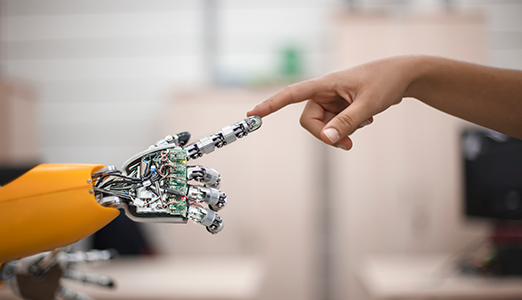
Last month, we discussed how automation gives as it takes in the workplace. Now, we will continue to discuss innovation, but in the form of bionics.
In short, bionics is defined as mechanical systems that can replace human capacity. While bionics was once reserved for science fiction, it is now making its way into every industry. It is helping workers solve problems, access data and perform physical tasks with less injury; it is helping companies innovate, streamline processes and enhance quality control. The opportunities it presents are immense.
To further define bionics, perhaps we should reference a familiar example: Google Glass, the augmented reality gadget. While Google first offered the device exclusively to the digerati elite, some companies are now using the technology to enhance their workforces and learn lessons about integrating advanced technologies.
GE Aviation, for example, is testing Google Glass on assembly lines, according to ZDNet. The system includes a wireless torque wrench to automatically torque fittings correctly, reducing mechanic error. At the same time, Google Glass Enterprise allows mechanics to see specifications immediately, rather than having to leave the assembly line to check a manual.
On a more micro level, Google Glass is a subset of bionics referred to as augmented reality, which is technology that superimposes computer-generated information onto the world we experience with our senses. I anticipate this form of bionics to continue to impact the near future.
Other bionic devices can replace injured body parts. Prosthetics are quickly becoming more elegant and capable, even enabling people with amputations to reenter the workforce and expand talent pools, according to Fast Company.
In some cases, bionics even enables workers to perform “super-human” activities, Technology Review says. For instance, SuitX has developed a bionic exoskeleton that allows workers to safely squat while lifting heavy iron girders into place.
It is myriad, positive examples such as these that trigger enthusiasm for bionics today and shed light on what it could become tomorrow.
I see bionics as an innovation that will progressively transform the workplace in the 21st century, and as the Regional Head of Adecco for North America, UK and Ireland, it is my goal to embrace new technologies that enhance work and ensure Adecco is the innovative leader in the staffing industry. I am—and will remain—focused on achieving that goal.
Next week, we will discuss an even more advanced form of this exciting technology: bionics for the brain. Specifically, I will examine how current research could lead to neural-machine interfaces that could potentially boost brain power.
